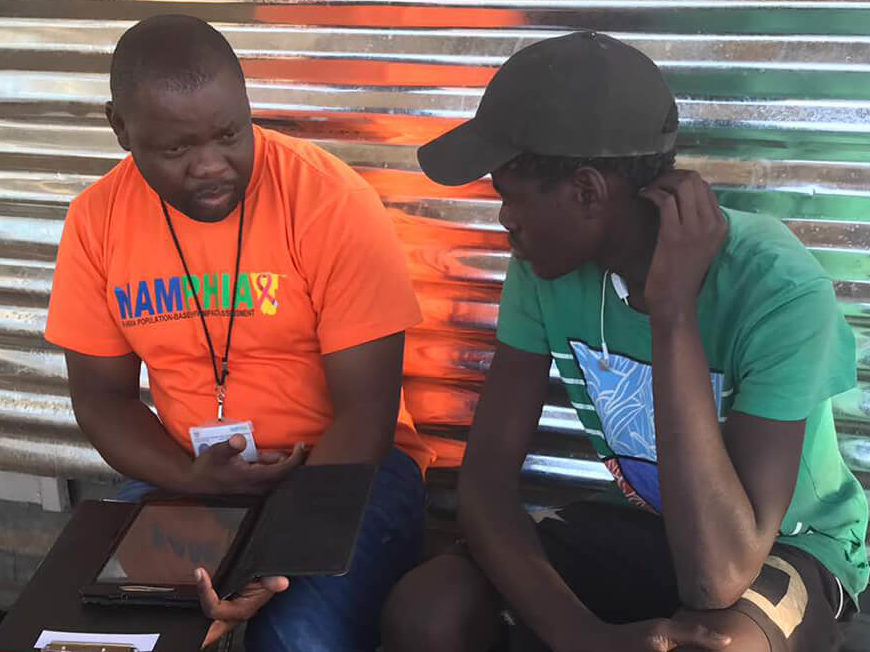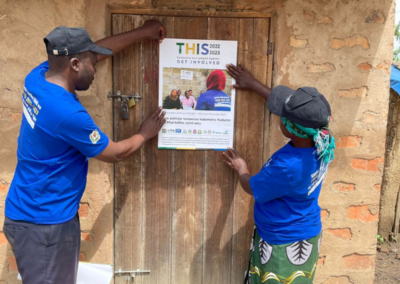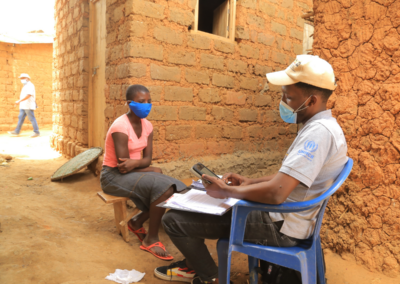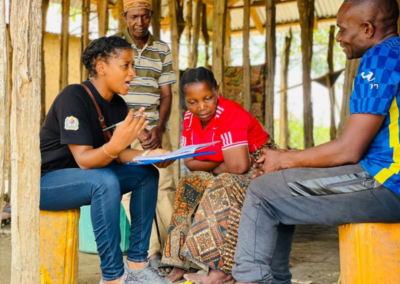Press Release
Amsterdam, July 25, 2018
The Government of the Republic of Namibia, the U.S. President’s Emergency Plan for AIDS Relief (PEPFAR), the U.S. Centers for Disease Control and Prevention (CDC), and ICAP at Columbia University (ICAP) released new data today at the 2018 International AIDS Conference demonstrating that the HIV epidemic is coming under control in Namibia.
Results from the Namibia Population-based HIV Impact Assessment (NAMPHIA) show that 77 percent of all HIV-positive adults in Namibia have achieved viral load suppression, a widely used measure of effective HIV treatment in a population, surpassing the Joint United Nations Programme on HIV/AIDS (UNAIDS) target of 73 percent by 2020. Compared with the UNAIDS 2012 estimates, Namibia has reduced its adult HIV incidence rate by 50 percent in the past five years.
Namibia has made this tremendous progress by either reaching or exceeding the UNAIDS 90-90-90 targets among women and, nationally, by attaining 86-96-91 among adults. Namibia accomplished this through the strategic expansion of HIV prevention and treatment services, with a focus on viral load suppression at the individual and community level, and the swift implementation of forward-leading HIV policies.
NAMPHIA results also suggest that women ages 15-24 still have a far higher HIV incidence rate (0.99 percent) than same-aged young men (0.03 percent) in the country. This highlights the continued need for expanded primary HIV prevention in young women, including through the PEPFAR-led DREAMS Partnership, and ensuring all men 25-35 are virally suppressed, such as through the new MenStar Coalition.
“These exciting new data demonstrate that a community-centered approach results in high community viral suppression, which decreases the rates of new HIV infections. Several African countries are now on track to reach HIV epidemic control by 2020, accelerated progress that was only possible because of partner country political leadership and their rapid adoption of policies focusing primary prevention and treatment resources for maximum impact,” said Ambassador Deborah L. Birx, M.D., U.S. Global AIDS Coordinator and Special Representative for Global Health Diplomacy. “Together, we are making the impossible possible, moving farther and faster toward ending AIDS as a public health threat by 2030.”
“The results of this survey demonstrate the importance of providing innovative, data-driven prevention, care and treatment to those affected by HIV,” said CDC Director Robert Redfield, M.D. “CDC continues to support Namibia’s efforts to control its HIV epidemic – and we remain committed to global efforts to change the course of the HIV pandemic and help save lives.”
The PHIAs evidence important advances being made under the PEPFAR Strategy for Accelerating HIV/AIDS Epidemic Control (2017-2020). Among the ten countries (Cameroon, Cote d’Ivoire, Eswatini, Lesotho, Malawi, Namibia, Tanzania, Uganda, Zambia, and Zimbabwe) that have released PHIA results, Namibia has achieved the highest level of viral load suppression among all HIV-positive adults. Other countries surveyed show varying levels of progress toward reaching the viral suppression target of 73 percent, highlighting key areas for improvement, particularly the need to increase the coverage of HIV testing among adult men, adolescent girls, and young women.
“The impressive findings from the NAMPHIA survey demonstrate the Government of Namibia’s successful commitment to confronting the HIV epidemic,” said Wafaa El-Sadr, MD, MPH, MPA, ICAP global director. “The survey findings also provide a blueprint to guide HIV policies and programs in-country moving forward.”
New data from PHIAs in Cameroon and Cote d’Ivoire released earlier this week highlight substantial gaps in western Africa toward reaching epidemic control despite significant investments, pointing to the depth and breadth of key policy barriers to HIV service uptake that need to be addressed.
Overall, the PHIAs reveal key gaps in HIV prevention and treatment programming for women ages 15-24 and men ages 25-34 that require urgent attention and action. In all countries surveyed, lower percentages of these groups reported knowing their HIV status, current use of HIV treatment, and had viral suppression than older adults. PEPFAR is aggressively addressing these challenges, including through its innovative public-private partnerships.
The PHIAs are funded by the U.S. government, through PEPFAR, and conducted by the CDC, ICAP, and local governmental and non-governmental partners. With PEPFAR support, four additional countries – Ethiopia, Haiti, Kenya, and Rwanda – will release PHIA data on a rolling basis through 2019, providing an ability to chart and validate further progress toward reaching epidemic control by 2020.
###
The U.S. President’s Emergency Plan for AIDS Relief
PEPFAR is the United States government’s response to the global HIV/AIDS epidemic, which represents the largest commitment by any nation to address a single disease in history. Through the compassion and generosity of the American people, PEPFAR has saved and improved millions of lives, accelerating progress toward controlling and ultimately ending the AIDS epidemic as a public health threat. For more information, please visit www.pepfar.gov, and connect with PEPFAR on Twitter, Facebook, and Instagram.
The U.S. Centers for Disease Control and Prevention
CDC works 24/7 saving lives and protecting people from health threats to have a more secure nation. HIV and tuberculosis (TB) are the world’s two most deadly infectious diseases, and CDC’s Division of Global HIV & TB works with partners to tackle these two epidemics and produce the greatest global health impact. More information can be found at http://www.cdc.gov/globalhivtb.
ICAP at Columbia University
ICAP was founded in 2003 at Columbia University’s Mailman School of Public Health. A global leader in HIV, tuberculosis, other health threats, and health systems strengthening, ICAP provides technical assistance and implementation support to governments and non-governmental organizations. More than 2.2 million people have received HIV care through ICAP-supported programs, and over 1.3 million have received antiretroviral therapy through such support.
CONTACTS:
Curran Kennedy
ICAP at Columbia University
ck2878@columbia.edu










